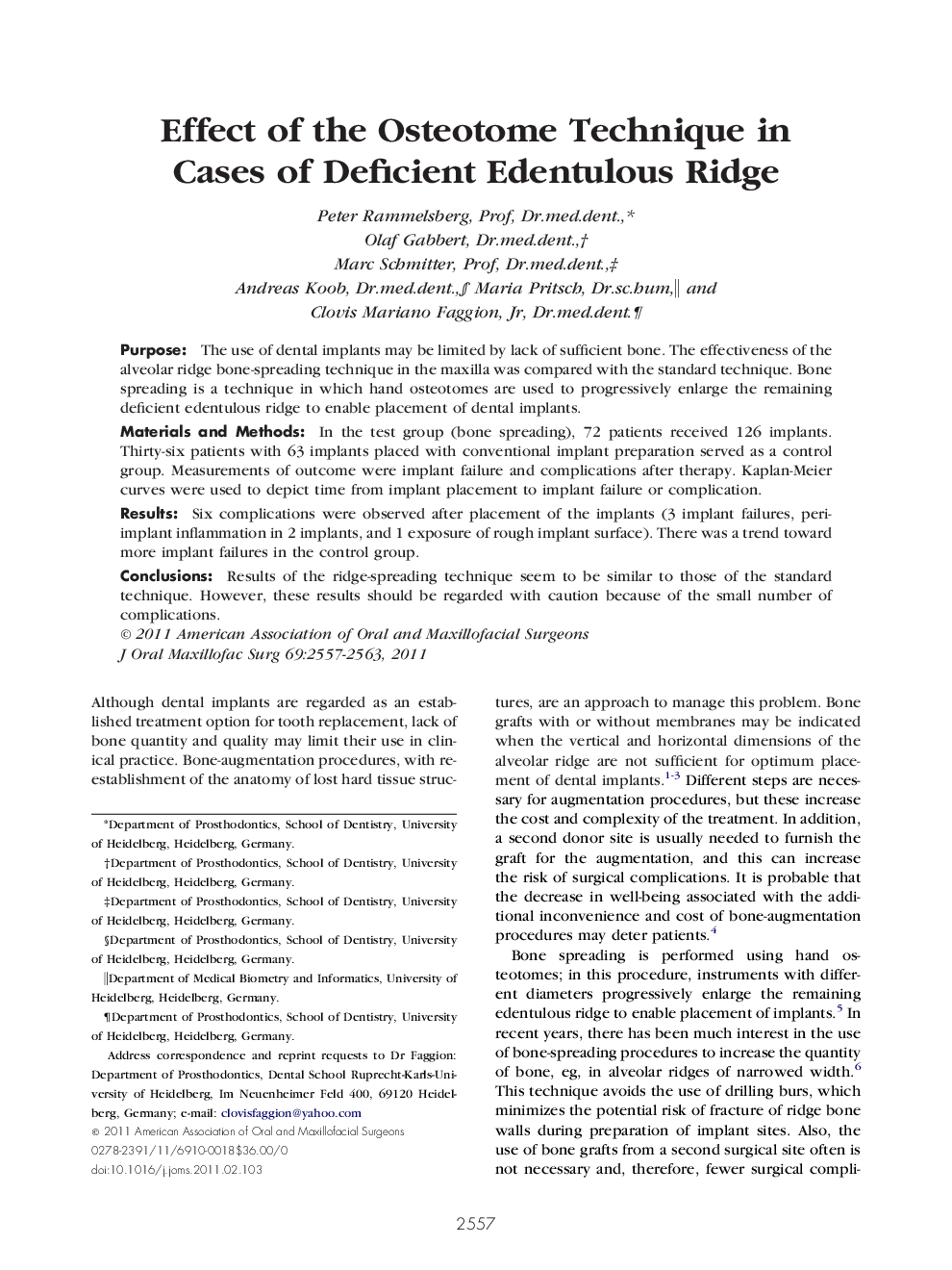| Article ID | Journal | Published Year | Pages | File Type |
|---|---|---|---|---|
| 3156817 | Journal of Oral and Maxillofacial Surgery | 2011 | 7 Pages |
PurposeThe use of dental implants may be limited by lack of sufficient bone. The effectiveness of the alveolar ridge bone-spreading technique in the maxilla was compared with the standard technique. Bone spreading is a technique in which hand osteotomes are used to progressively enlarge the remaining deficient edentulous ridge to enable placement of dental implants.Materials and MethodsIn the test group (bone spreading), 72 patients received 126 implants. Thirty-six patients with 63 implants placed with conventional implant preparation served as a control group. Measurements of outcome were implant failure and complications after therapy. Kaplan-Meier curves were used to depict time from implant placement to implant failure or complication.ResultsSix complications were observed after placement of the implants (3 implant failures, peri-implant inflammation in 2 implants, and 1 exposure of rough implant surface). There was a trend toward more implant failures in the control group.ConclusionsResults of the ridge-spreading technique seem to be similar to those of the standard technique. However, these results should be regarded with caution because of the small number of complications.
